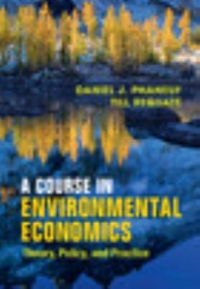Assume now that the consumer consumes a clean and a dirty good, the quantities of which are
Question:
Assume now that the consumer consumes a clean and a dirty good, the quantities of which are written as C and D, which generate utility U(C,D). Assume the clean and the dirty good are substitutes. A fixed amount of labor is supplied by the consumer (with elasticity equal zero and no disutility of labor) to a representative firm, which with one unit of labor can either produce one unit of the clean or the dirty good.
(a) Set up the conditions for an unregulated competitive equilibrium (no government budget, no regulation of emissions). Assume now that the regulator sets an emission standard (i.e. she directly fixes the amount of the dirty good D) and charges a labor tax m paid by the consumer to finance a fixed government budget G.
(b) Conduct a comparative static analysis with respect to D and m on all endogenous variables, including the wage rate.
(c) Determine the second-best optimal combination of the emission standard D and the labor tax m, and also derive the formula for the marginal cost of public funds. Assume now that an emission tax can be charged on the dirty good with the revenues recycled.
(d) Conduct a comparative static analysis with respect to the emission tax rate and the labor tax on all endogenous variables.
(e) Determine the second-best optimal combination of the emission and the labor tax, and investigate and interpret the decomposition of the emission tax rate.
Step by Step Answer:

A Course In Environmental Economics
ISBN: 9781316866818
1st Edition
Authors: Daniel J Phaneuf, Till Requate





